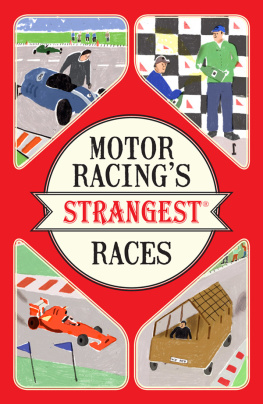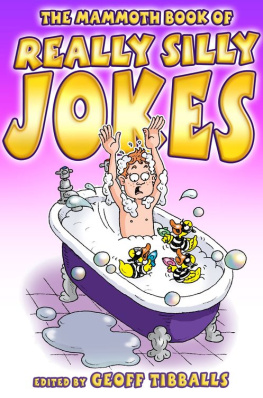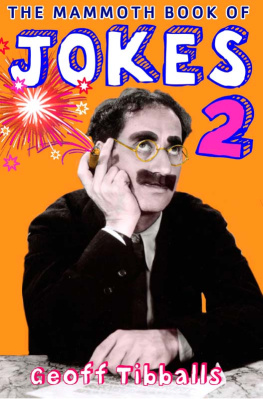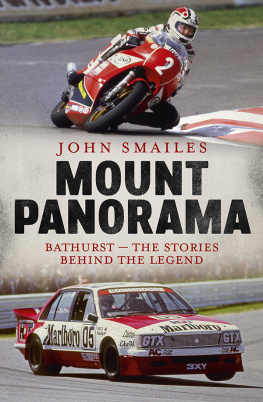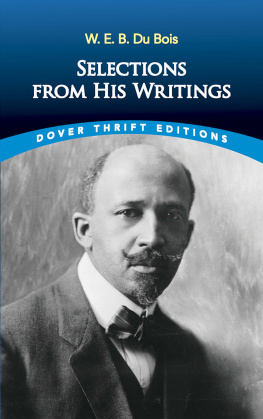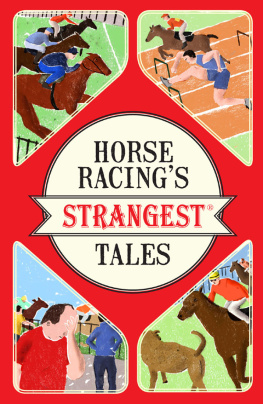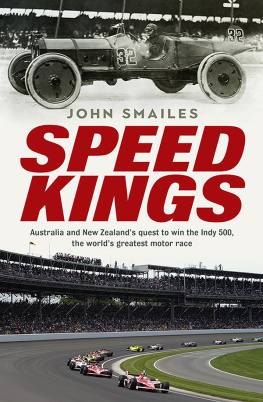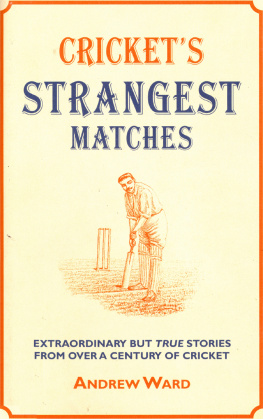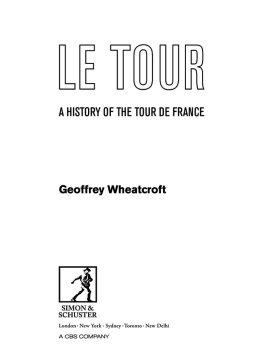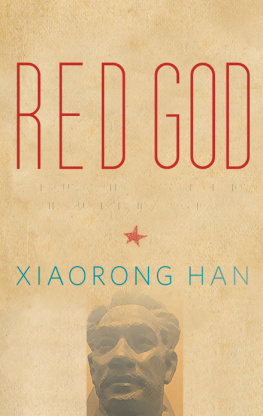
Other titles in the STRANGEST series
Crickets Strangest Matches
Footballs Strangest Matches
Golfs Strangest Rounds
Kents Strangest Tales
Laws Strangest Cases
Londons Strangest Tales
Medicines Strangest Cases
Rugbys Strangest Matches
Runnings Strangest Tales
Shakespeares Strangest Tales
Teachers Strangest Tales
Tenniss Strangest Matches
Titles coming soon
Cyclings Strangest Tales
Fishings Strangest Tales
Horse Racings Strangest Tales
Sailings Strangest Tales

Extraordinary but true stories from over a century of motor racing
GEOFF TIBBALLS

CONTENTS
My first priority is to finish above, rather than beneath, the ground.
(James Hunt, 194793)
INTRODUCTION
When the motley assortment of steam and petrol-powered vehicles lined up in Paris in 1894 at the start of the trial to Rouen, they launched the colourful history of motor racing. Many of the pioneering events were death-defying, trans-continental marathons, occasionally visiting remote settlements that had never before seen a motor car, in which the competitors were obliged to negotiate basic dirt tracks, muddy bogs, fast-flowing rivers, over-zealous policemen and a seemingly endless supply of stray dogs.
France led the way, not only in chiens perdus, but also in promoting the sport of motor racing. One of many ingenious events was an 1899 handicap race between walkers, horsemen, cycles, motorcycles and cars over the 104 miles (167km) between Paris and Trouville. The horses were allotted 14 hours and finished first and second; the cars, allowed three hours, were third and fourth. The walkers are probably still out there somewhere.
Meanwhile the United States specialised in endurance contests, some of which were highly charged affairs. In 1902 one John Grant Lyman was suspended for six months by the Automobile Club of America for the heinous crime of exceeding 20mph (32.2km/h) during the Long Island Endurance Run.
The first regular circuit race, the Circuit des Ardennes, took place in 1902 but it was several years before this type of event became popular. And in those days a lap could be anything up to 75 miles (121km) as in Germanys Kaiserpreis and take the best part of an hour and a half. Spectator satisfaction was not exactly high on the list of priorities.
Since these humble beginnings, the human race has done many strange things to motor cars in the name of sport some barely legal. Cars have been bullied and coerced in a manner which would make even Basil Fawlty blush and have taken part in events best classified as innovative. How else would you describe a race where a four-poster bed chases a garden shed around a Grand Prix circuit?
Gathered here are races with strange beginnings, strange middle bits and strange finishes, as well as races which were just strange. They include the Frenchman who drove 25 miles (40.2km) in reverse; the Grand Prix where the leading drivers were so far ahead that they stopped for a meal in the pits; the Le Mans 24-Hour Race won by a car patched up with chewing gum; and the driver who drank six bottles of champagne virtually one per pit stop on the way to winning the Indianapolis 500. Most of the great names are featured as sometimes willing, sometimes baffled, participants Boillot, Nuvolari, Varzi, Farina, Fangio, Moss, Brabham, Stewart, Hunt, Mansell, Senna, Schumacher and Hamilton.
For the purposes of this book, I have included a few memorable rallies, too, partly because rallies are races in all but name and also because their catalogues of incomprehensible rules and regulations lend themselves to the bizarre. A race against time which ends with a stage to see who can go the slowest really does defy description! Yet that was precisely what the organisers of the Monte Carlo Rally came up with in 1932.
Dick Dastardly and Muttley would have loved every minute!
A big thank you to the following for making hours of research so rewarding: The British Newspaper Library, Nottinghamshire Library Services, Westminster Library, Marylebone Library, Derby City Library, Sheffield Library, Southport Local Studies Library, Donington Park race track and the Derby Evening Telegraph. Thanks also to Nicola Newman at Portico and Katie Hewett, and to Jeremy Robson for giving the original project the green light.
Geoff Tibballs
WORKING UP A HEAD OF STEAM
PARIS TO ROUEN TRIAL, 22 JULY 1894
Motoring was still very much in its infancy when Pierre Giffard, editor and owner of the Parisian newspaper Le Petit Journal, hit upon the idea of staging the worlds first motor event. It was not a race as such but an 80 mile (129km) trial along the bumpy roads between Paris and Rouen, the winner to be the vehicle which, in the opinion of the judges (all of whom were on the staff of Le Petit Journal) most closely adhered to their ideal of dtre sans danger, aisment maniable pour les voyagers, et de ne pas coter trop cher sur la route, in other words safe, easy to handle and cheap to run. Hoping for a large turn-out to ensure maximum publicity for his newspaper, M. Giffard was no doubt heartened to receive entries from 102 drivers putting their names forward to compete for the handsome first prize of 5,000 francs. The entry list contained a vast array of vehicles, hardly any two alike, and featuring no fewer than 20 different methods of propulsion. These ranged from the more conventional steam-powered designs or the new-fangled petrol-powered cars to contraptions driven by compressed air, clockwork, gravity, a system of pendulums, a combination of animate and mechanical motor and even the rocket-like Baricycle, a device which was propelled solely by the weight of its passengers!
The organisers laid down strict regulations governing which vehicles would actually be allowed to compete. First there was an inspection test which eliminated all but 25 of the original 102, principally the more bizarre entries. The event itself was scheduled for 7 June but with a number of vehicles still not ready by the start of that month, it was postponed until 22 July. This allowed more opportunity to arrange a 32 mile (51.4km) qualifying trial, which every competitor had to pass. The time limit set was three hours, thus necessitating an average speed of just over 10mph (16.1km/h), but this was deemed too harsh and so the time was extended to four hours, thereby reducing the required speed to a more attainable 8mph (12.9km/h). Seventeen vehicles took part in the first qualifying run on 19 July, but only 13 passed. A second run on the twentieth saw all six starters pass and two more qualified the following day, to leave a starting line-up of 21 (all powered by either petrol or steam engines) for the journey to Rouen.
The festivities began at 8a.m. in the Paris suburb of Neuilly and the route ran via Nanterre, St Germain, Mantes (where drivers would stop for lunch) and Vernon to Rouen. Along the way entire villages turned out to cheer and to shower the vehicles with flowers and fruit. Families set up picnic tables at the side of the road so that they could gawp at the great monsters as they trundled by. For some, it would be the first time they had ever seen a motor car. On board each car, in addition to the driver and passenger, was an official observer to determine whether the criteria for the first prize were met. The vehicles were flagged off at 30-second intervals, but it soon became apparent that the most powerful vehicle by far was a giant De Dion articulated steam tractor driven by wealthy playboy and renowned duellist Count Jules de Dion. The leaders covered the 30 miles (48.3km) to Mantes by 11a.m., de Dion showing the way to Georges Lematre in a Peugeot and Emile Levassor in a Panhard. The attempts at official timekeeping at Mantes were singularly chaotic, but after a leisurely lunch, the drivers began the second leg of their journey at 1.30p.m.
Next page
